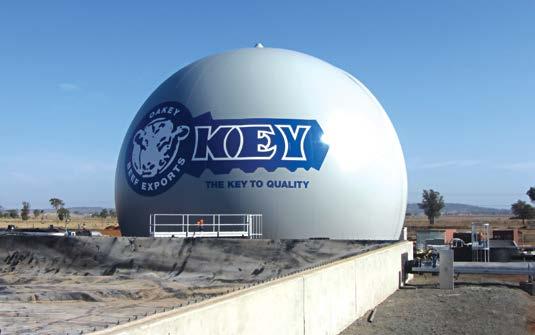INDUSTRY NEWS
Clear air: Monash research to reduce carbon footprint of asthma inhalers Researchers are conducting a series of experiments using X-ray scattering and computer modelling in order to find a low-global warming replacement propellant for asthma inhalers. By 2030, the propellant tetrafluoroethane (HFC-134a) will be banned from use in pressurised metered-dose inhalers (pMDIs), leaving the world’s 339 million asthma sufferers (2.7 million Australians) without a solution and short of breath – literally. In 2019, the Kigali amendment to the Montreal Protocol mandated the beginning of a 10-year phase-out of HFC-134a – a potent greenhouse gas. Just 1kg of HFC-134a is equivalent to 1,430 kg of carbon emissions. Unfortunately, this chemical is also essential to the operation of asthma inhalers. The pharmaceutical industry is now in a race to transition to more environmentally-friendly solutions. The problem is that most potential replacements are highly flammable and unsuitable for human consumption. Dry powder inhalers are not yet suitable for all drugs, leaving many respiratory disease sufferers without an option. But a ground-breaking international research investigation, led by Monash University, is looking to #CHANGEIT. Dr Daniel Duke, a Senior Lecturer in Monash University’s Department of Mechanical & Aerospace Engineering, is working with colleagues at the Woolcock Institute of Medical Research (Sydney) and Argonne National Laboratory (Illinois, USA), as well as a major drug company, to reduce the carbon footprint of inhalers using stateof-the-art synchrotron X-ray technology and advanced computer models. This technology allows researchers to see what happens to the spray particles inside the inhaler, and measure the density and quantity of the drug that various propellants can deliver asthma sufferers in order to identify the most promising replacements. The 4
Waste + Water Management Australia | March/April 2020
research is being led out of the Laboratory for Turbulence Research in Aerospace and Combustion at Monash University in Melbourne. Dr Duke has received an Australian Research Council Discovery Project grant of $185,000 to continue his fundamental work in helping asthma sufferers in the future. “What we’re trying to do is find out whether there are alternative propellants, which behave properly, from the options that are safe. HFC-134a was previously found in our air conditioners and fridges before it was banned due to its high emission of greenhouse gases,” Dr Duke said. “Pharmaceutical companies have stuck with HFC-134a because it works very well; and, most importantly, it’s safe for human consumption. One problem is all the environmentally-friendly options that have gone into your air conditioner and fridge are flammable or toxic, and we don’t know if they’re safe for the human body if ingested. “Another issue is some chemicals have lower pressures and lesser densities which means they carry less of the drug into the airway. That means we’ll also need to look at redesigning pMDIs to maximise performance. “Essentially we’re doing all the groundwork to give the drug companies the confidence to go to clinical trials knowing that all the engineering, chemistry and physics problems have been put to bed, and all they have to do is make sure that it’s effective and safe for patients.” Asthma affects as many as 339 million people worldwide and around 2.7 million Australians. In 2015, the estimated cost of asthma in Australia was $28 billion. Roughly 40,000 Australians are hospitalised with asthma each year. The research team comprises Dr Daniel Duke and Professor Damon Honnery (Monash University); Brandon Sforzo and Alan Kastengren (Argonne National Laboratory); Professor Paul Young (University of Sydney) and Professor David Schmidt (University of Massachusetts-Amherst).
Moreland acts on vision for a zero carbon and waste free community by 2040 Moreland City Council in inner-suburban Melbourne, recently adopted its Zero Carbon Moreland - Climate Emergency Action Plan. The plan sets out how it will be supporting residents, businesses and schools to act together in response to the climate emergency. The five-year action plan maps a pathway towards three key outcomes for 2040, namely: • efficient and 100% renewably powered energy; • active or zero emissions transport; and • a circular economy with zero waste. Mayor of Moreland, Cr Lambros Tapinos highlighted the urgent need for Council and the Moreland community to think global, act local. “Council is leading by example in our own operations. Through a combination of energy efficiency and renewable energy, we expect Council’s greenhouse gas emissions will soon be around 70% less than 2011 levels,” Cr Tapinos said. “We know that climate change is a global challenge. Communities like Moreland can lead the way by taking local action together for a safe climate.” Over the next five years Council will support residents, businesses and organisations to rapidly reduce their climate pollution through initiatives like kerbside collection of food and garden organics waste. Other initiatives include the construction of five kilometres of new shared paths to make cycling and walking more accessible, supporting local recycling and reuse-focused initiatives (like toy libraries and repair cafes) and installing more electric vehicle charging stations for public use. Council’s Cooling Communities initiative will continue to ensure low-income households can access support to upgrade their homes to stay protected from extreme weather. The action plan includes targets to double the amount of solar power capacity installed across the municipality and reduce average residential energy use by around 16% by 2025. Moreland Council will continue acting to reduce its own emissions, by transitioning its car fleet to zero emissions vehicles and shifting away from fossil gas use in its facilities. For further information, please visit: www.morelandzerocarbon.org.au/actions










